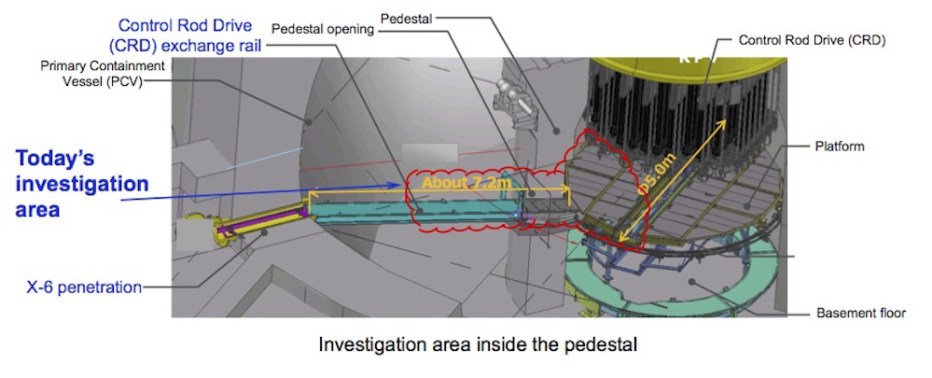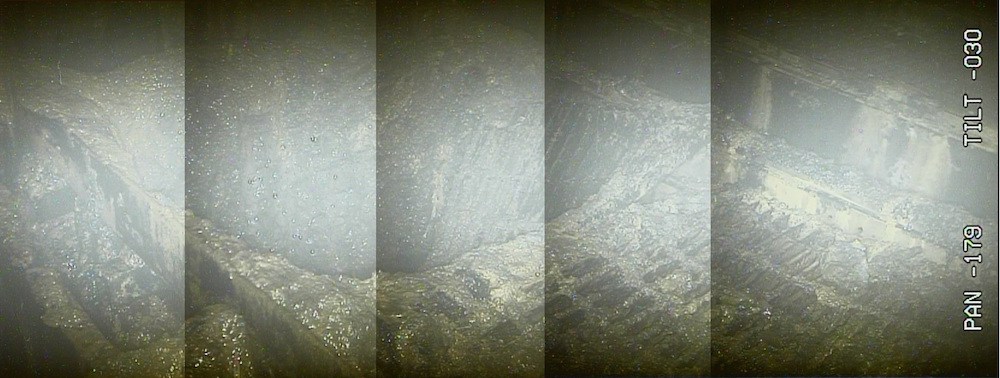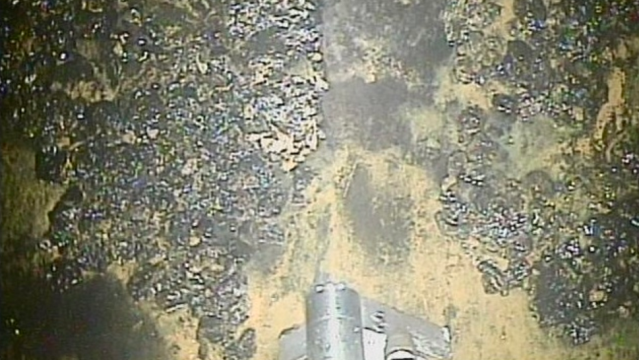A remotely-controlled robot sent to inspect and clean a damaged reactor at Japan’s Fukushima nuclear plant had to be pulled early when its onboard camera went dark, the result of excess radiation. The abbreviated mission suggests that radiation levels inside the reactor are even higher than was reported last week — and that robots are going to have a hell of a time cleaning this mess up.
The robot was sent into reactor No. 2 to inspect and clean a passage for another robot in the damaged nuclear facility. Image: TEPCO/Associated Press
Last week, Gizmodo reported that radiation levels inside the containment vessel of reactor No. 2 at Fukushima reached a jaw-dropping 530 sieverts per hour, a level high enough to kill a human within seconds. Some Japanese government officials questioned the reading because Tokyo Electric Power Company Holding (TEPCO) calculated it by looking at camera interference on the robot sent in to investigate, rather than measuring it directly with a geiger counter or dosimeter.
It now appears that this initial estimate may have been too low. Either that, or TEPCO’s robot is getting closer to the melted fuel — which is very likely. High radiation readings near any of the used fuel are to be expected.

Image: TEPCO
Yesterday, that same remotely operated robot had to be pulled when its camera began to fail after just two hours of exposure to the radiation inside the damaged reactor. Accordingly, TEPCO has revised its estimate to about 650 sieverts per hour, which is 120 more sieverts than what was calculated late last month (although the new estimate comes with a 30 per cent margin of error). The robot is designed to withstand about 1000 accumulated sieverts, which given the failure after two hours, jibes well with the camera interference. This likely means that the melted fuel burned through its pressure vessel during the meltdown in March of 2011, and is sitting somewhere nearby.
It’s important to point out that the radiation is contained within the plant, and is not affecting regions nearby. There are no new leaks from the facility, nor is radiation leaking into the air or sea. Also, the radiation levels inside the plant are not increasing; the levels are getting higher because TEPCO is getting closer to the source of the radiation, namely the melted fuel. The previous upper reading, of 73 sieverts, was recorded back in 2012 from a much greater distance.
Yesterday, TEPCO sent the robot into reactor No. 2 to do some exploratory work and to prepare the site for a future investigation. It was the first time that a robot had entered the reactor since the earthquake and tsunami disaster six years ago. The robot was supposed to clean a thick layer of grime thought to be the melted bits of paint and cable insulation under the pressure vessel, which holds the reactor core. The company is trying to clean the passage before another robot is sent in to conduct a more thorough investigation. A second robot, dubbed the “scorpion”, is scheduled to measure radiation and temperature inside the reactor, and to assess the condition of reactor and the melted fuel.
But before that can happen, the passage way needs to be cleared. TEPCO’s clean-up robot, equipped with a high-pressure water pump and a scraper, only went part way into the area underneath the core that TEPCO wants to inspect. The probe was able to clean a couple of metres of the burnt residue near the exterior of the primary containment vessel, but it wasn’t able to clean more because the deposits were too tough to remove; the burnt, dark brown gunk grew thicker and was harder to remove as the robot went further. After two hours, the robot’s video feed dimmed dramatically, indicating an imminent failure. Its operators aborted the mission before losing complete control of the probe.

Melted grating inside reactor No. 2, likely caused by falling fuel debris. (Image: TEPCO)
TEPCO is now worried that the scorpion robot will not be able to reach the space beneath the pressure vessel, and like its predecessor, will not be able to work for very long in the damaged plant (the scorpion is designed to handle 1000 total sieverts). The high level of radiation may force TEPCO, a nationally-owned company, to rethink its robot-based strategy for locating the molten fuel. The firm is currently in the early stages of a cleanup that’s expected to last decades. Until TEPCO knows the precise location of the melted fuel, and until it’s able to ascertain the structural damage in each of the three reactors affected, the company won’t be able to decommission the plant and remove the fuel.
[Japan Times, Canadian Press via CBC]
